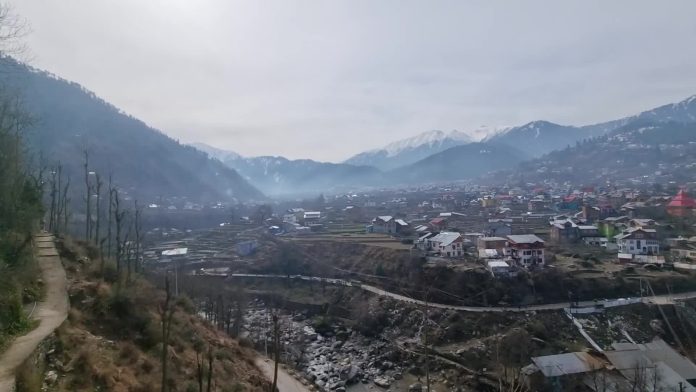The once pristine rivulets of Bhaderwah weep silent tears, their crystal hearts replaced by the stench of neglect and pollution. What were once life-giving arteries, pulsing with sweet, clear water, have morphed into choked veins, carrying the toxic burden of human waste and indifference. This ecological tragedy demands immediate action, lest the Valley be drowned in its filth. The culprit is clear: unchecked settlements along these delicate water bodies, spewing their garbage, including the most vile remnants of human existence, directly into their fragile currents. Half a dozen of these once proud streams have succumbed to this onslaught, transforming from nurturing veins to festering wounds on the Valley’s face. Locals, religious bodies, and environmentalists raise their hands in supplication, their pleas lost in the deafening silence of inaction. Neel Ganga, a river once revered for its sacred purity, now carries the shameful burden of human waste and non-biodegradable debris. Puneja Nallah, Halian, Haloon, and Hanga each name a fading echo of past purity, now synonymous with environmental degradation. The same is true of the historic Gupt Ganga temple and the Markazi Jamia Masjid.
The malefactors in this egregious environmental debacle conspicuously manifest as the District Administration and local bodies, their egregious shortcomings laid bare. Each department entrusted with the sacrosanct duty of fortifying against encroachments and executing judicious building plans has abjectly floundered in its responsibilities. The municipal bodies, tasked with the onerous duty of orchestrating coherent urban planning and executing efficacious solid waste management protocols, find themselves woefully inept. The UT’s Pollution Control Board, ostensibly a bulwark against environmental transgressions, stands indicted for its conspicuous failure to enforce the stipulated guidelines. Despite the NGT’s relentless imposition of punitive measures for the wanton dumping of municipal waste into rivers, the authorities persistently remain recalcitrant. A recent directive targeting the Devika river in Udhampur, ostensibly meant to serve as a clarion call for corrective action, stands as an emblem of the authorities’ insouciance.
The ceaseless contamination of the water bodies in Jammu and Kashmir finds its nexus in the pernicious practice of indiscriminate solid waste disposal and the glaring dearth of sewage treatment plants. The upper echelons of the pertinent departments must, with alacrity, recognise the exigency of this critical predicament and proffer forthwith a comprehensive solution. The causative factors are glaringly apparent, yet a pervasive reluctance to act permeates the bureaucratic echelons.
The consequences are dire. The waters that once quenched thirst and nurtured life are now poisoned chalices, threatening the very existence of aquatic life and jeopardising the health of Bhaderwah’s people. Mysterious illnesses, water-borne diseases-these are the grim portents of a valley slowly succumbing to its waste. Water pollution is not just an environmental issue; it’s a threat to public health. The outbreak of diseases is a wake-up call, a dire warning that Bhaderwah is teetering on the brink of a public health crisis. Cold-water fish, once thriving in these crystal depths, now gasping for breath in the toxic soup that has replaced their habitat.
Though belated, the threat of Section 144, a legal cudgel against polluters, offers a flicker of hope that perhaps, finally, action will be taken. But Section 144 alone is not enough. Bhaderwah needs more than just punitive measures. It needs a multifaceted approach-a comprehensive sewerage system to intercept the flow of filth, public awareness campaigns to educate and change habits, and most importantly, unwavering political will to enforce environmental regulations and prioritise ecological restoration. Bhaderwah’s rivulets are not just water bodies; they are the lifeblood of the valley, the cradle of its history, and the heart of its beauty. The time for action is now. Let Bhaderwah’s story not be one of environmental failure but one of determined revival, a testament to the human spirit’s ability to heal the wounds we inflict on the Earth.
Trending Now
E-Paper


